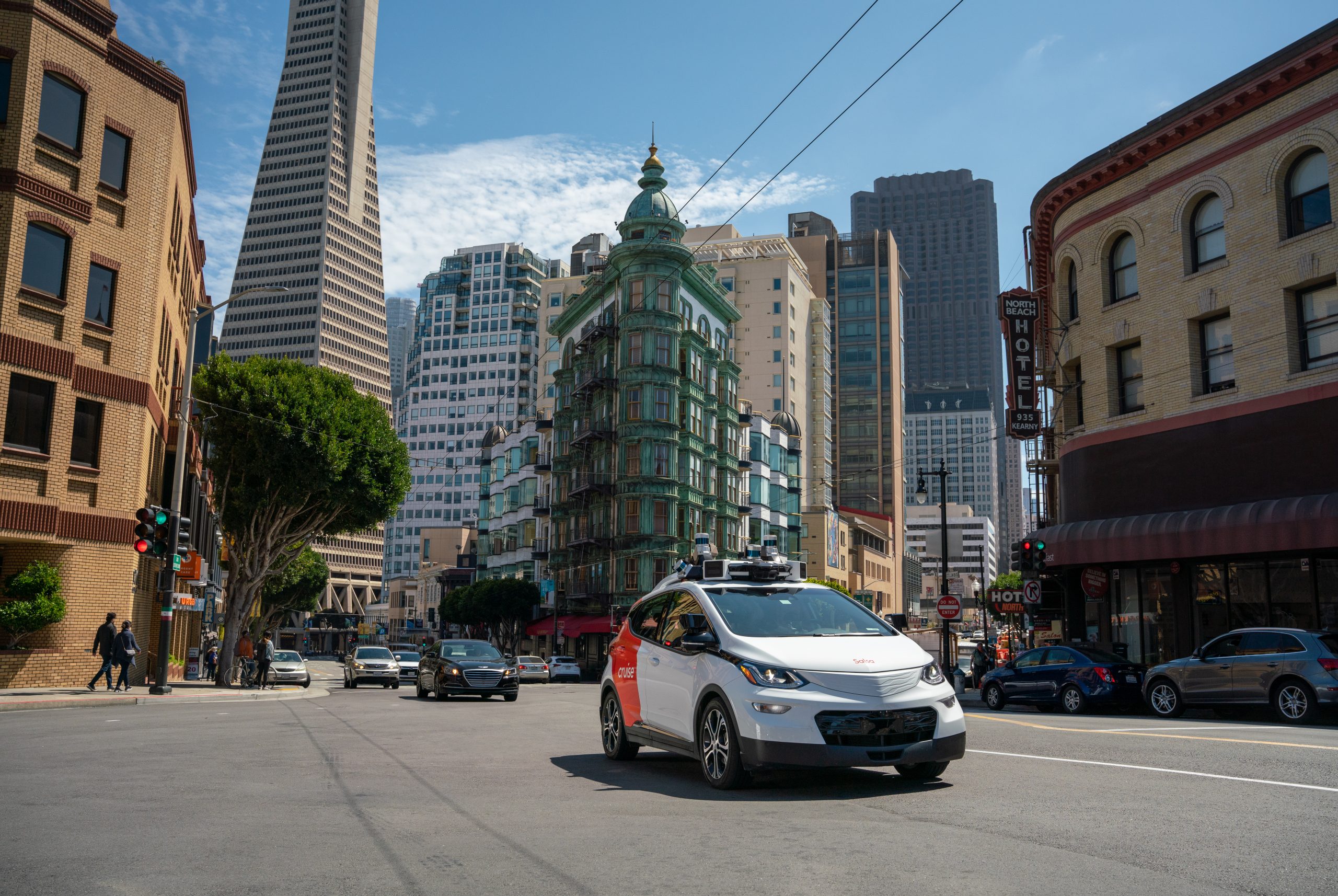
Self-driving taxis in SF
The autonomous automobile tech company Cruise announced in late last week (June 2, 2022) it has been granted approval to start California’s first driverless taxi service. And its modified Chevy Bolts are now navigating – with no one behind the steering wheel – the steep hills and narrow streets of San Francisco, alongside the city’s iconic cable cars.
While driverless taxis already operate in Phoenix, Arizona, the addition of Cruise’s self-driving cabs to the City by the Bay’s notoriously dense traffic marks a significant step forward for the industry and its underlying technology. The company made the announcement via a blog post on June 2 from COO Gil West, who described state approval as a milestone:
Today, we received the first-ever Driverless Deployment Permit granted by the California Public Utilities Commission, which allows us to charge a fare for the driverless rides we are providing to members of the public here in San Francisco. This means that Cruise will be the first and only company to operate a commercial, driverless ride-hail service in a major U.S. city.
According to reporting by the Associated Press, other self-driving taxis are already ferrying passengers around SF, but those, which are operated by Cruise and competitor Waymo, have human drivers at the wheel to take over if the robotic drivers find themselves out of their depth. The new fleet will have no such backup drivers, and the only humans onboard will be the passengers.
Safety first for self-driving taxis
AP also noted that the fleet of self-driving taxis will be limited in size, operating hours and areas where they may pick up and deliver passengers. AP said the restrictions are due to safety concerns:
The ride-hailing service initially will consist of just 30 electric vehicles confined to transporting passengers in less congested parts of San Francisco from 10 p.m. to 6 a.m. Those restrictions are designed to minimize chances of the robotic taxis causing property damage, injuries or death if something goes awry. It will also allow regulators to assess how the technology works before permitting the service to expand.
According to AP, the autonomous taxicabs will not be allowed to operate during heavy fog or rain, and state approval was granted despite concerns Cruise’s vehicles must double park in traffic lanes to take on and deliver their passengers.
More than just a taxi ride
To make the orange-and-white, four-door electric sedans more appealing to riders, the company has given the Chevy Bolts names. Passengers can expect to be chauffeured by the likes of Cheddar, Poppy or Tostada. Those names may have been earned during an effort that saw Cruise’s vehicles deliver more than 2 million meals to low-income residents of San Francisco during the COVID-19 pandemic.
The meal program is part of a government-supported, society-wide effort to transform the way technology impacts people, and Cruise claims it serves a greater good:
The vision of AVs [autonomous vehicles] benefiting society is larger than any single company. The US Department of Transportation recently released its six principles of innovation: help America win the 21st century, support workers, tackle key policy priorities like safety, equity and climate change, provide opportunities to collaborate, and adapt as technology changes. The common thread among these principles was that technology can’t simply exist for its own sake: it must serve the social good.
Cruise’s current fleet of taxis will eventually be replaced by the Cruise Origin, a vehicle that has no controls in the passenger compartment. Shaped not unlike a small city bus, the Origin has no side or rearview mirrors, no steering wheel or pedals, only seats for passive passengers.
GM backing autonomous future
Founded in 2013, Cruise’s electric vehicles have since logged more than 2 million autonomous miles of travel in California, most of them driven by Chevrolet Bolts modified with the company’s autonomous driving hardware and software package.
Use of the Bolt as the Cruise’s primary vehicle is not a coincidence. Chevy’s parent company, General Motors, purchased a majority share of Cruise Automation in 2016, and a press release at the time of the acquisition described it as a way to accelerate the GM’s autonomous vehicle development efforts. GM President Dan Ammann said:
Fully autonomous vehicles can bring our customers enormous benefits in terms of greater convenience, lower cost and improved safety for their daily mobility needs.
Around the same time it purchased the majority share of Cruise, GM also formed its own Autonomous Vehicle Development Team. Since then, Ammann has departed, and Kyle Vogt, who founded Cruise, is acting as interim CEO. Most recently in March, GM signaled its deep commitment to the Cruise by buying out $2.1 billion in shares from other key investors and sinking an additional $1.35 billion investment into it. Microsoft and Honda Motors are also Cruise shareholders.
Bottom line: Driverless taxis are taking to the streets of San Francisco.
The post Self-driving taxis take to the streets of San Francisco first appeared on EarthSky.
0 Commentaires